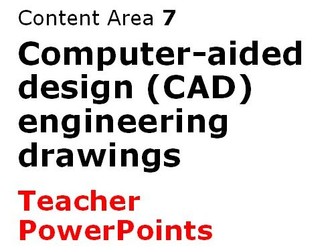KS3 D+T project - Scenario: Throw-away culture
<p>This unit of learning has been designed <strong>in response to the return to school, COVID 19 restrictions and guidance</strong>, and places a greater focus on the investigation, design and development stages of the iterative cycle. Due to the social distancing requirements, the resources prioritize making through CAD, rather than in the workshop where space may be limited. There are however different table-based modeling tasks to engage students and develop their practical skills.</p>
<p>Carefully mapped against the KS3 curriculum requirements, this scheme of learning has been designed to ensure that students continue to receive an enriching, non-linear experience, underpinned with the vital threshold knowledge and skills required for future learning.</p>
<p>The scheme is a scenario based ‘chair design’ project covering 19 hours, suitable for delivery in Year 8 or 9. An extensive, editable project booklet is included, alongside linked PowerPoint presentations to support your delivery.</p>
<p>The project places a particular focus on experimentation and risk-taking with opportunities to improve maths and literacy stamina included.</p>
<p>Assessment has been embedded to complement the four main sections of the GCSE specifications (Investigate, Design, Make, Evaluate) and success criteria has been included for each stage to encourage student ownership and independence.</p>
<p>I am a new Head of Faculty and I recently undertook a complete rebranding of the department and this project will be delivered in Year 8 and 9 at my school. Hence, all logos and branding can be tailored to your own school.</p>
<p>Although designed as a project, lessons can will also work in isolation to fit with your existing curriculum planning.</p>
<p>To compliment this scheme, I would recommend my ‘screen addiction’ or ‘sleep deprivation’ units for Year 7 or 8 which also available on TES.</p>
<p>The booklet also provides numerous opportunities for students to be stretched using upgrade tasks.</p>
<p>Each lesson has specific knowledge and skills as a focus, as follows:</p>
<ol>
<li>Throw-away cultures and task analysis/design brief</li>
<li>User profiling and product analysis</li>
<li>Ergonomics and anthropometrics</li>
<li>Sustainability</li>
<li>Forces and material testing</li>
<li>Mechanical systems</li>
<li>Investigation knowledge recall</li>
<li>Structures and plasticine modeling with sketching</li>
<li>Structures and card modeling with sketching</li>
<li>Structures and straw modeling with sketching</li>
<li>Knock-down fittings and flat-pack challenge</li>
<li>Isometric drawing</li>
<li>Design analysis</li>
<li>TinkerCAD introduction</li>
<li>TinkerCAD challenges</li>
<li>TinkerCAD final chair design 1</li>
<li>TinkerCAD final chair design 2</li>
<li>Evaluation 1: Designing for flat-packing</li>
<li>Evaluation 2: Areas and volumes and projection reflection</li>
</ol>
<p>In order to successfully deliver this sequence of lessons the following additional resources will be required:</p>
<ul>
<li>Plasticine for modeling</li>
<li>Straws for modeling</li>
<li>Tape measures</li>
<li>Modeling material samples for force testing</li>
<li>6/7 IKEA chairs for flat-pack challenge</li>
</ul>











